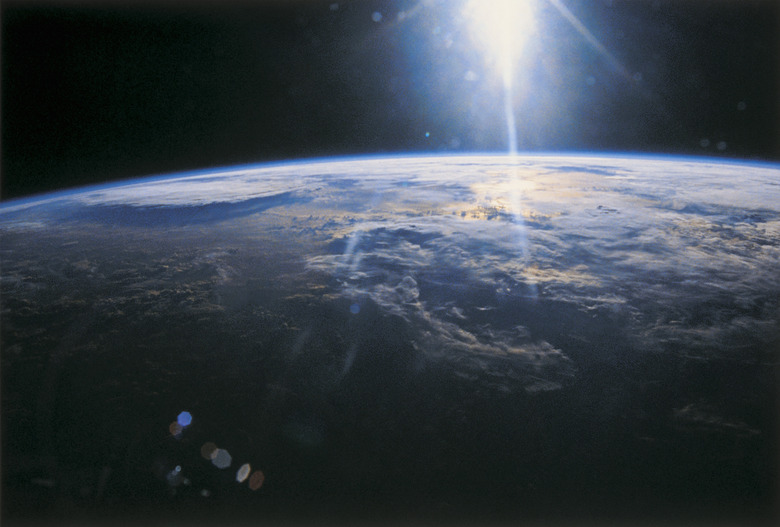Does An Equinox Happen All Over The Earth At The Same Time?
Earth's axis of rotation is tilted 23.5 degrees relative to its orbital motion, and that gives the planet its seasons. For a single moment twice a year, both poles are equidistant from the sun; day and night are roughly equal in both hemispheres on the dates when this equinox occurs. When measured in sidereal time — time relative to the stars — the equinox happens at the same moment for everyone, but people experience it at different local times.
Earth's Axial Tilt
Earth's Axial Tilt
All the planets are tilted, and Earth's 23.5-degree tilt isn't much compared to Uranus, which spins around an axis tilted almost 90 degrees relative to its orbital motion. It's a lot compared to Jupiter, though, which has an axial tilt of only 3 degrees. Because of the tilt of its axis, each of Earth's poles spends one half of the year closer to the sun than the other, basking in summer warmth, and the other half shivering in the frigidity of winter. The seasonal progressions of each hemisphere are mirror images of each other, unfolding in opposite directions from two points of reference, which are the equinoxes.
Equinox Dates
Equinox Dates
The two equinoxes — which are the days on which day and night are nearly equal — occur roughly around the same time every year, but they don't always fall on the same dates. In 2011, the September equinox — which is the beginning of autumn in the Northern Hemisphere and the beginning of spring in the Southern Hemisphere — fell on September 23. In 2012, it occurred on September 22. Each equinox occurs sometime within a three-day span. The same is true of the solstices, which are the days when Earth's axis makes its most oblique angle with respect to the sun.
The Equinox Event
The Equinox Event
Although the word equinox refers to a date, the event that is responsible for it — the sun's crossing of the celestial equator — occurs in a single moment. The moment is recorded in almanacs in Greenwich Mean Time (GMT) or Coordinated Universal Time (UTC). For an observer on a specific part of the globe to be prepared to celebrate the moment, that observer must convert GMT or UTC to the relevant local time. People in different time zones observe the sun's passage at different local times. For some, the event occurs during the day while for others it occurs at night.
The Elusive Equinox
The Elusive Equinox
Although day and night are supposed to be of equal length on the equinox, this equality never happens at the equator, and it happens on days other than the actual equinox date at higher latitudes. There are two reasons for this. The first is that the sun is visible before it rises and after it sets because of the refraction of its light through the atmosphere. The second is that the sun's orb has angular extension in the sky. Dawn occurs when the leading edge of the sun breaks the horizon — not its center — and dusk ends when its tailing edge disappears. Together, these effects add more than 6 minutes to the apparent length of the day.
Cite This Article
MLA
Deziel, Chris. "Does An Equinox Happen All Over The Earth At The Same Time?" sciencing.com, https://www.sciencing.com/equinox-happen-over-earth-same-time-18514/. 24 April 2017.
APA
Deziel, Chris. (2017, April 24). Does An Equinox Happen All Over The Earth At The Same Time?. sciencing.com. Retrieved from https://www.sciencing.com/equinox-happen-over-earth-same-time-18514/
Chicago
Deziel, Chris. Does An Equinox Happen All Over The Earth At The Same Time? last modified March 24, 2022. https://www.sciencing.com/equinox-happen-over-earth-same-time-18514/
